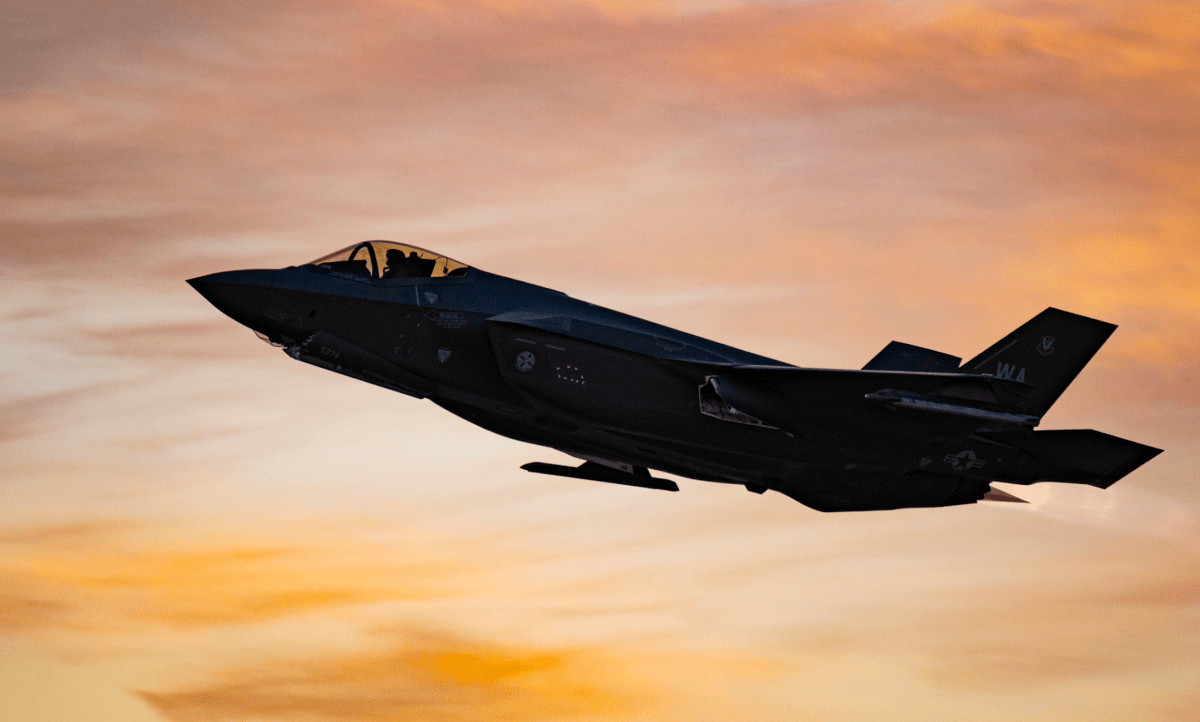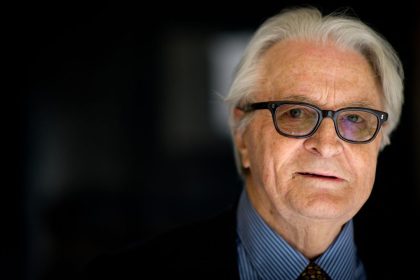[ad_1]
One of Russia’s greatest test pilots, retired Major General Magomed Tolboyev, is trash talking the Lockheed Martin F-35 Lightning II jet fighter.
Magomed … what a cool name!
OK, back to the trash talk.
“Su-57 will kill [a F-35] easily, should they meet one on one. The F-35 cannot maneuver, it’s simply incapable. But it does has electronic might,†Tolboyev told Russian news media outlet Tass, adding that its complicated electronics could be disrupted even by solar flares.
Tolboyev, a renowned test pilot who celebrated his 70th birthday on Jan. 20, says the SU-57 fifth generation fighter jet should easily handle the US made F-35 in a one-on-one dogfight, thanks to its superior maneuverability.
“This is why I oppose everything electronic,†the pilot disclosed.
Tolboyev characterized the Su-57 (NATO code name Felon) as a “brilliant plane,†but underscores that the time of one-on-one dogfights are long over, Tass reported.
“Today, you no longer fight one on one. Everything depends on your support. There is electronic warfare today. This is no longer a sparring tatami, but a complex approach to tactical issues,†the pilot said.
Major General Tolboyev is considered an honored test pilot and was also awarded a title of the Hero of Russia.
During his service, he piloted over 50 types and modifications of planes, including MiG-29, MiG-31, Su-24 and Su-27, Tass reported.
In mid-1980s, Tolboyev participated in the Energia-Buran space program and underwent a full training course for manned space flights on multiple-use spacecraft.
He became a politician in Russia’s State Duma in the years following the Soviet collapse, also serving in several posts as a Russian security official and military officer.
For sure, he’s a somebody in his fish bowl.
From its top speed of over Mach 2, to its 3D thrust vectoring and formidable arsenal of air-to-air missiles, the Su-57 is designed to hunt down high-profile air targets, Mark Episkopos of National Interest reported.
Meanwhile, the F-35 is primarily a strike fighter that penetrates enemy airspace to target vital assets or infrastructure.
It also leverages its extensive suite of avionics and sensors to act as a “quarterback in the sky,†generating a dynamic picture of the battlefield and feeding it to nearby friendly units via a capability Lockheed Martin calls “sensor fusion.â€
Some have even called it “a computer with wings.â€
Designed to do everything, some American critics say it does nothing really well, and, it cost a bloody fortune. In some circles of the Pentagon, it’s called “the trillion-dollar mistake.â€
Still, in all likelihood, an F-35 caught in this contrived, hypothetical situation would leverage its edge in certain stealth features to attempt to slip away from an approaching Su-57, Episkopos writes.
More fundamentally, it’s an apples-to-oranges comparison that tries to force the F-35 into a role it is not meant to play.
At low speeds, an Su-57 can stand on its tail — literally, stand on its tail, like a cobra snake — but if it’s been sighted, discovered and fired upon from miles away, it’s dead meat.
And as the great Chuck Yeager once said, it’s not the metal, it’s the pilot in the seat … and he, or she, who has the most experience, will inevitably win out.
But let’s not diminish the Su-57 — an aircraft that is perhaps a bit misunderstood.
The jet’s lack of high-end low-observable design features doesn’t mean it is irrelevant or even ineffective, according to esteemed military analyst Tyler Rogoway of The War Zone.
Sukhoi designers have taken a “balanced†approach to low-observability, whereby the aircraft’s reduced radar signature from certain aspects becomes just another feature to be weighed against other design priorities, Rogoway writes.
Here are five features, which make the Su-57 a very dangerous fighter jet:
Side facing cheek-mounted radars: The Su-57 has a feature that was long-promised for the F-22 but as of yet, has never been delivered — side-facing radars mounted below the cockpit on aircraft’s “cheeks.†These active electronically scanned array (AESA) X-band radars supplement the aircraft primarily nose-mounted X-band N036 Byelka (Squirrel) AESA radar. The utility of these radars is clear — they provide a far greater sensor field of view and thus enhance situational awareness for the Su-57’s pilot.
Infrared search and Track: The Su-57 sports an advanced 101KS ‘Atoll’ infrared search and track sensor in the traditional position on Russian fighters — installed atop the aircraft’s nose, near its windscreen. Although this placement clearly hurts the Su-57s radar signature where it matters most — in the forward hemisphere — an IRST is among the best technologies available for detecting and engaging stealth targets from afar.
Directional infrared countermeasures system: Like the F-22, the Su-57 has a number of missile launch detector apertures scattered around the aircraft but the Su-57 also has turrets that fire modulated laser beams at an incoming missile’s seeker to blind it and throw it off course. The Russian system used on the Su-57 is part of the larger N101KS electro-optical suite that includes the missile launch detector systems, IRST, and the DIRCM turrets mounted dorsally behind the cockpit and ventrally under the cockpit. 0
Thrust vectoring: We have discussed how thrust vectoring has limited utility throughout most of a fighter’s flight envelope — with it being most useful at very high altitudes and speeds, or in the near or post-stall regime — but it’s still a cool feature to have, especially if other advantages remain out of technological reach. Considering the tradeoffs in design and capabilities the Su-57 represents, being able to outmaneuver the enemy within visual range is still a positive.
Unique weapons bay configuration: The Su-57 has a unique tandem weapons bay. We still don’t know much about it, but it seems as if four to six medium-range air-to-air missiles can be carried at one time internally. Depending on the depth of the bays, it’s possible fewer, larger weapons could be carried instead — such as guided bombs or air-to-surface standoff missiles — but we will have to wait for more official information and photo evidence in order to discuss this further with confidence.
In conclusion, I credit Major General Tolboyev — he is dead rights when he says the era of the aerial dogfight is over. This isn’t the Korean war, or the Vietnam war, or even the Cold War.
Aerospace and weapons technology is so advanced, on both sides, that it is impossible to say who has the advantage. Still, the Su-57 is one mean Mo-Fo of a fighter jet, and despite its lack of stealth, it is downright deadly.
Sources: Tass, National Interest, The War Zone, Wikipedia
[ad_2]













